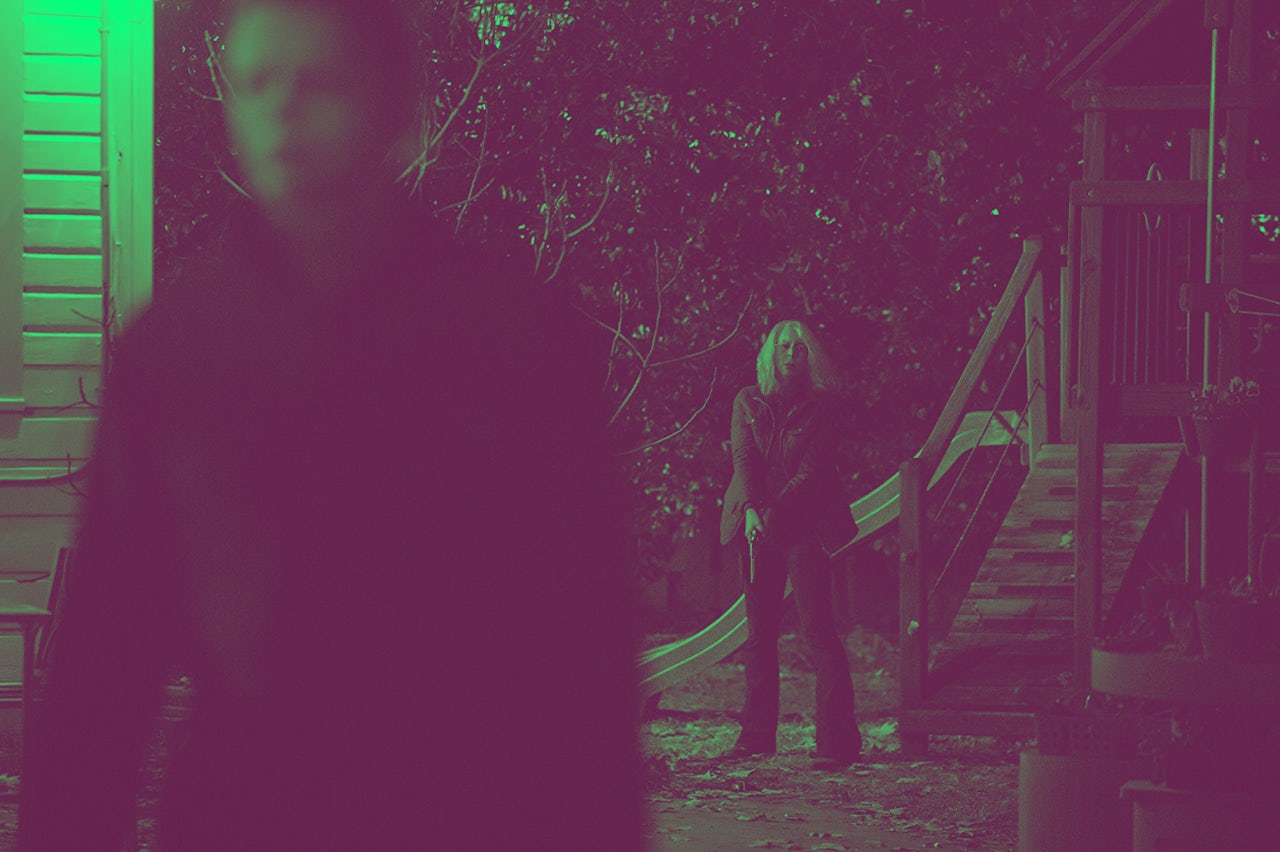Earlier this month, there was an incredibly stupid story in the news cycle, invented and promoted by Fox News: “Jamie Lee Curtis wields firearms in new ‘Halloween’ movie despite advocating for gun control.” In response, Curtis gave an interview to USA Today in which she espoused her support for the Second Amendment and “common-sense gun safety and gun laws,” because I guess you have to play this game when dealing with these kind of smooth-brained provocateurs instead of simply saying “Jesus, you are too stupid for words.”
Any faction in the culture wars is prone to pre-judging a piece of art before it’s released, but Fox News’ suggestion was particularly dumb: Curtis is an actress portraying a fictional character, and this fictional character happens to need a lot of guns in order to stave off the supernatural-ish serial killer who’s haunted her for 40 years. But Halloween itself is also fairly pro-gun, by the logic of those “common-sense gun safety” laws that Curtis supports, and difficult to quibble with on political terms unless you’re being intentionally obtuse.
The new Halloween, directed by indie auteur David Gordon Green and co-written with idiot-humor king Danny McBride, ignores every other movie in the series (and there have been a lot) except the first, functioning as a direct sequel set exactly 40 years later. Laurie Strode (Curtis), the protagonist of the original movie, was permanently traumatized by her encounter with the murderous Michael Myers, turning her into a sort-of doomsday prepper who lives isolated in the woods, and raised her daughter Karen (Judy Greer) to be proficient in all sorts of survival tactics, much to the detriment of their relationship. Myers is locked up at the movie’s start, but you know how that goes: He escapes fairly quickly, and heads towards town to carve up all the horny teens and clueless adults he can find, en route to a final confrontation with Strode, whose PTSD-inflected paranoia seems more justifiable the more dead bodies show up.
How can anyone hope to stop Myers? With a gun in hand, and very carefully. Strode uses some dummies outside her house for target practice (wearing ear protection, of course), long before Myers escapes. She’s also amassed an impressive arsenal (kept behind lock and key, of course) in her basement, and starts running around town, revolver in hand, once word gets out that Myers is on the loose. (She tries to press a gun into her daughter’s hand, to no avail; Karen mostly thinks her mom needs to go to therapy.)
There’s no errant gunslinging, no shoddy firearm safety. During Strode’s first encounters with Michael in the wild, she takes careful aim and fires a single shot each time, rather than a furious spray — one of them pierces a mirror he’s standing in front of, another clips him in the shoulder. (He shakes it off, because he is a metaphorical demon from hell.) Right after, a cop comes up from behind her to join the hunt, leading her to wheel around and smack him in the face — not shoot him, like an amateur would. Later on, when Karen is finally — finally! — ready to accept that Myers is a real threat, she remembers all her childhood training. At one point, she’s hiding in the basement, rifle in hand, and when the door opens to reveal some spooky cut-off legs, she doesn’t make the amateur mistake of accidentally blowing away her mom with a rifle out of fear because she thinks it’s the killer.
You know who does fuck up with their gun, though? A tween who comes across the crashed bus carrying Myers and some other inmates and wanders the scene with his rifle to scope the damage. Myers’ doctor comes out of the bus saying “don’t shoot,” but the tween is so spooked he pops the doctor in the shoulder, and runs off instead of tending to his fuckup. Not smart, tween — that’s why he gets his neck snapped shortly thereafter.
But more important than the politics that can be gleaned from these representative scenes is the narrative work that goes into justifying them. Of course Laurie Strode is a gun nut — she watched all her friends get slashed to death by a wordless, relentless psychopath with an inhuman tolerance for pain. The most compelling part of the movie is how it shows what a nervous wreck she’s become, and delineates the lingering trauma of such a formative experience so rarely seen in horror movies. Michael Myers is the face of true evil, as expressed by his doctor. You can’t bargain with that; you can only shoot it to death. Ironically, he’s what a lot of Second Amendment humpers and right-leaning scaredy-cats assume is readily found in the supposedly dangerous world around them. When Trump tells lies about the migrant caravan trudging toward the border, he invents the idea of several thousand Michael Myers marching in conjunction, knife in hand, ready to slash anything in their way. The laws invented to justify that self-defense don’t even protect the people who actually need it.
That people on the left have to meet the debate halfway by insisting on “common-sense gun laws” when gun violence is such a diseased epidemic is a depressing sign of how much rhetorical ground has been conceded to the lunatics, but to be fair: I did come out of Halloween convinced that if Michael Myers was literally on my trail, I’d also want to purchase like 17 shotguns and a house jerry-rigged with sliding metal doors, a basement with spikes, and enough accelerant to set it all on fire with a moment’s notice. That’s just due diligence, but thankfully the real world doesn’t demand such scrutiny.
